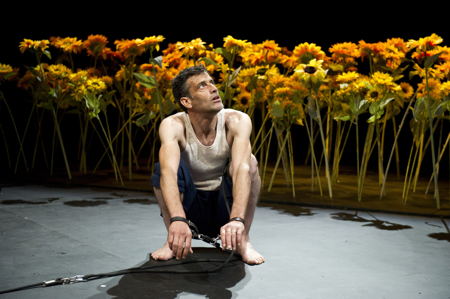
Joan Miró's works come to London in the first major retrospective here for nearly 50 years. Renowned as one of the greatest Surrealist painters, filling his paintings with luxuriant colour, Miró worked in a rich variety of styles. This is a rare opportunity to enjoy more than 150 paintings, drawings, sculptures and prints from moments across the six decades of his extraordinary career.
Miró is among the most iconic of modern artists, using a language of symbols that reflects his personal vision, sense of freedom, and energy. The exhibition includes many of the key works that we know and love. It also shows that, behind the engaging innocence of his imagery, lies a profound concern for humanity and a sense of personal and national identity. Extraordinary works from different moments of his career celebrate his roots in his native Catalonia.
The exhibition also traces an anxious and politically engaged side to Miró’s work that reflects his passionate response to one of the most turbulent periods in European history. Working in Barcelona and Paris, Miró tracked the mood of the Spanish Civil War and the first months of the Second World War in France. Under the political restrictions of Franco's Spain, Miró remained a symbol of international culture, and his grand abstract paintings of the late 1960s and early 1970s became a mark of resistance and integrity in the dying years of the regime. Telling the story of Miró's life and the time he witnessed reveals a darker intensity to many of his works.
(There is no mention of the influence on Miro by the Dutch Interiors - and nothing was featurred in the exhibition from the Rijks Museum - I wonder why??)
Franz Kafka
An explorer visits the penal colony, where an officer demonstrates to him the Harrow, an instrument used to inflict capital punishment. The Harrow is an extraordinarily elegant instrument: the condemned man lies face-down on a Bed, while a complex system of needles inscribes the commandment he has broken (e.g. HONOR THY SUPERIORS) on his back. The needles pierce deeper and deeper until the prisoner dies. In the process of dying, however, the condemned man finally understands the nature of justice and his punishment. His face is transfigured, a sight edifying to all those who watch. The officer begins to demonstrate the Harrow on a prisoner condemned to die because he was sleeping on duty.
The machine was conceived and developed by the former Commandant. It soon becomes clear that the explorer does not approve of the death-machine and that he feels morally bound to express this disapproval to the new Commandant, who is already known to have serious questions about using the Harrow as a method of punishment. Suddenly, the officer removes the condemned man from the Bed and takes his place. Before doing so, he adjusts the machine to inscribe "BE JUST." The Harrow begins its grisly work on the officer's back, but malfunctions
Bliss
xx

No comments:
Post a Comment